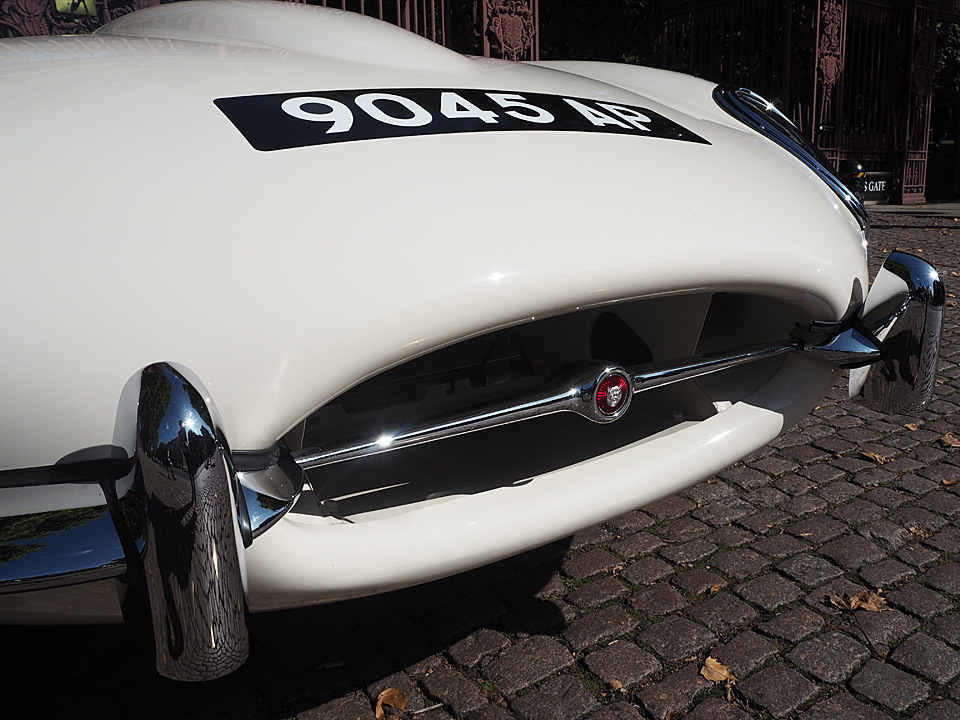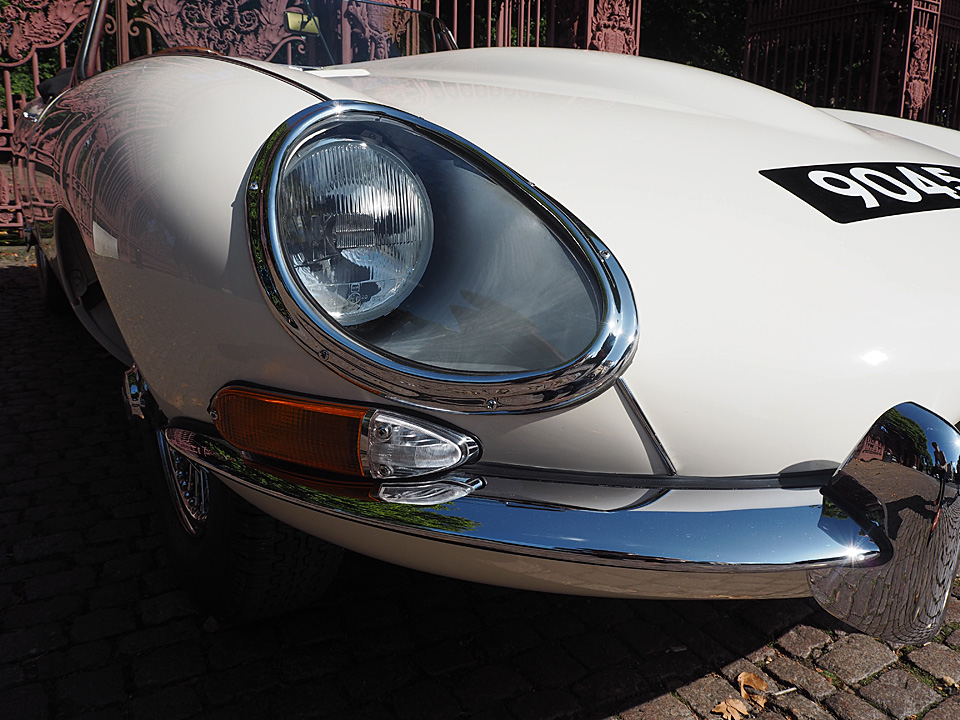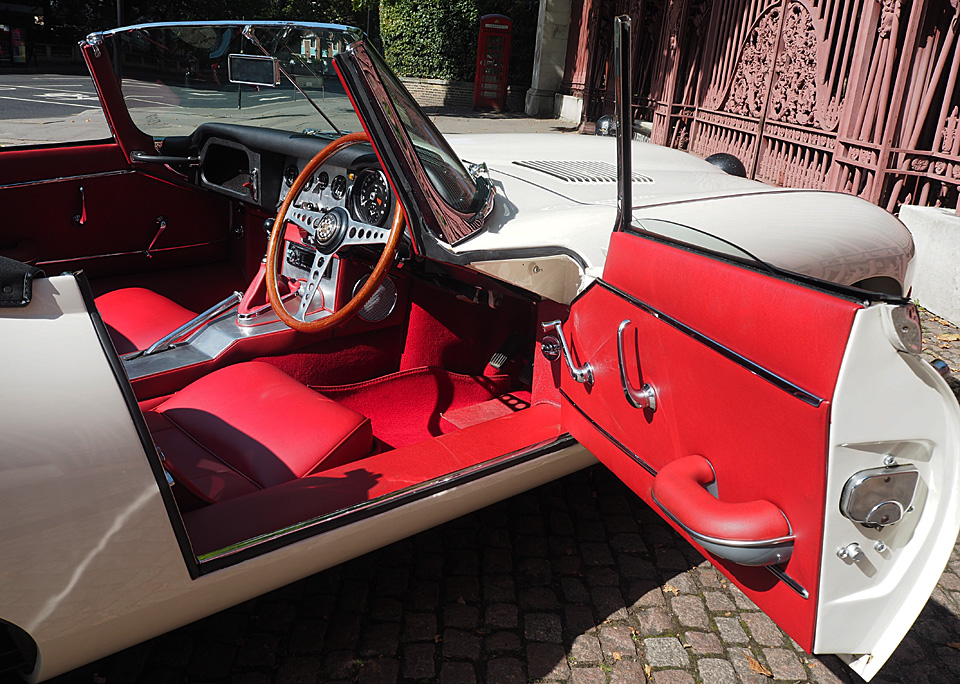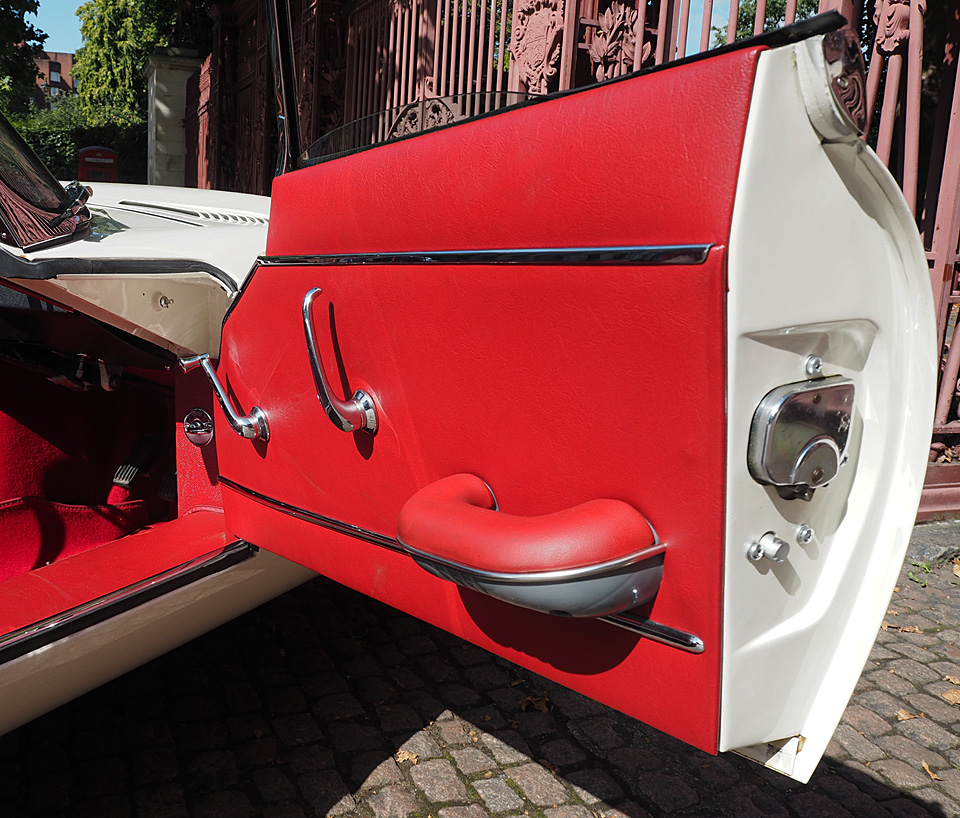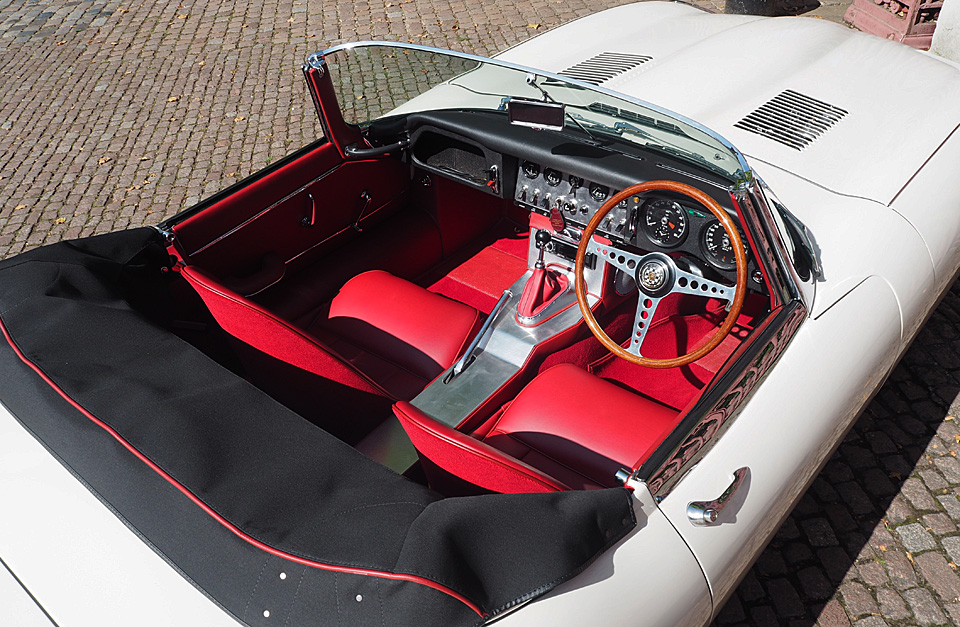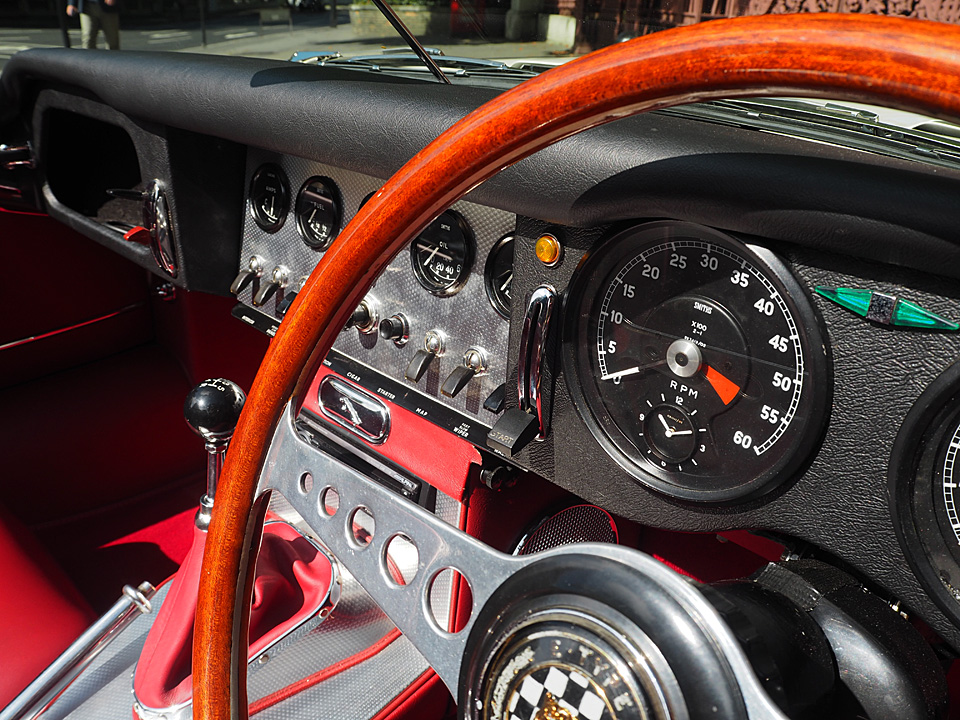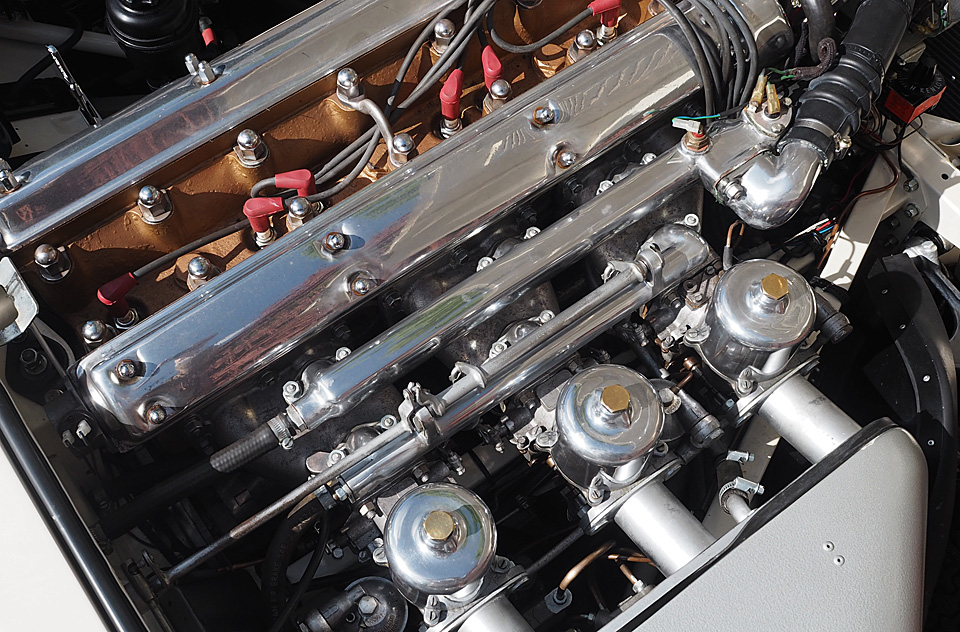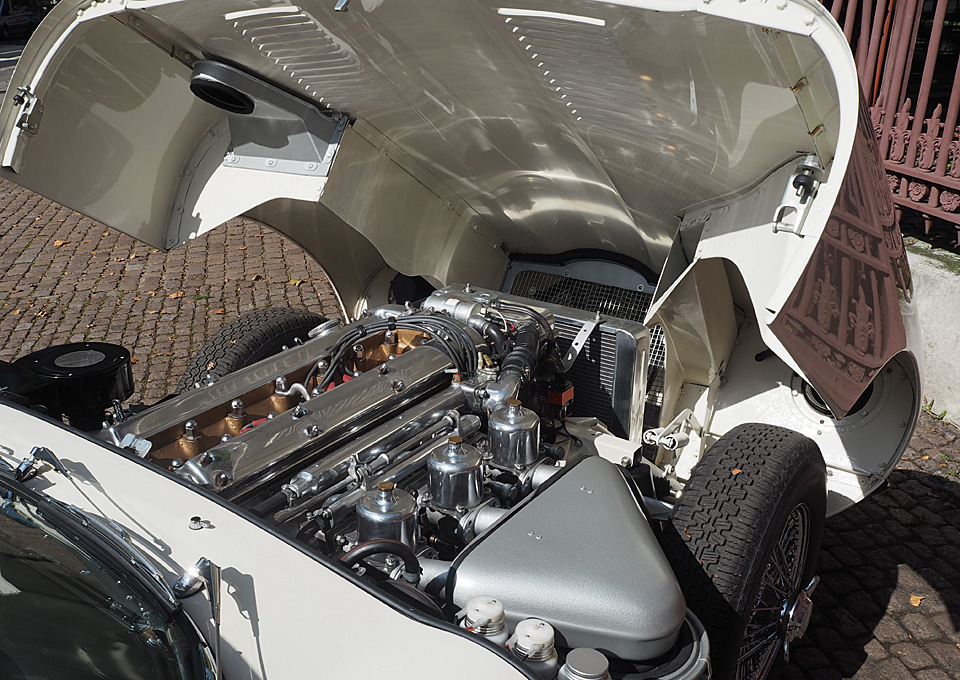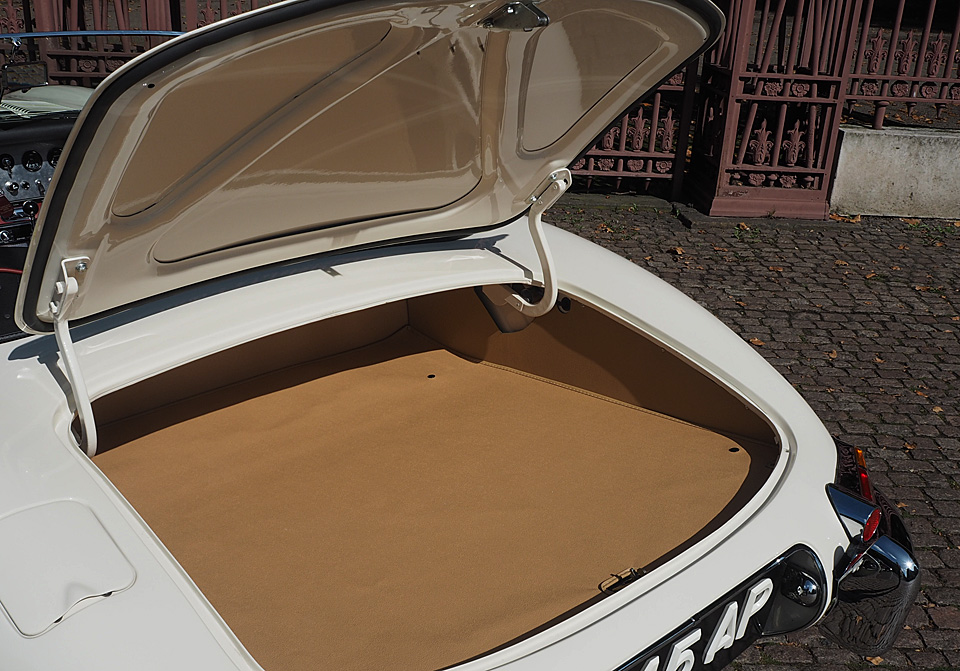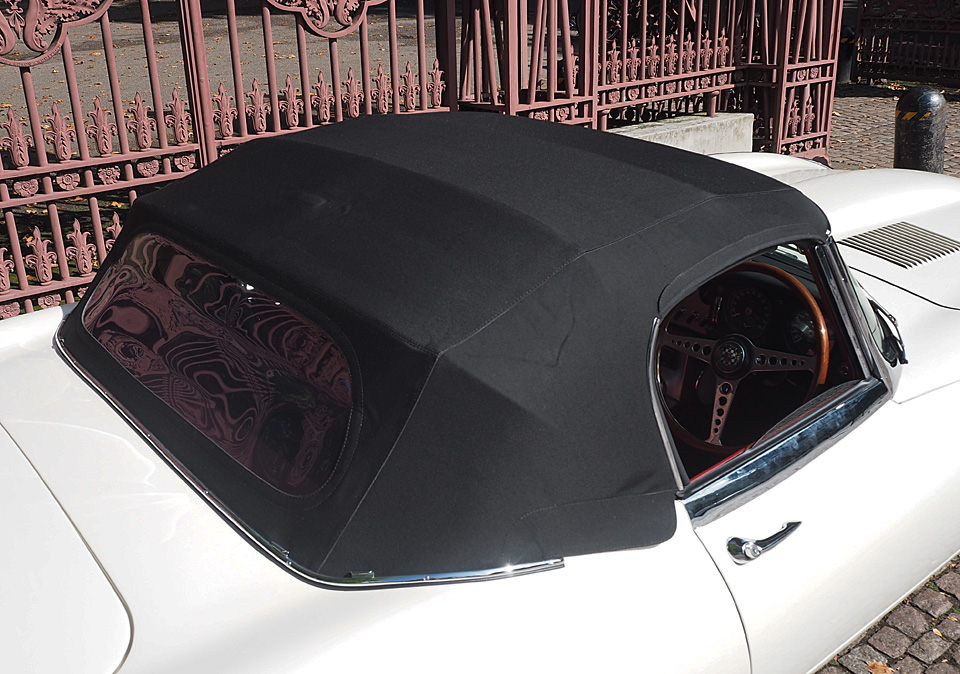Chassis No: 850428
Registration: 9045 AP

Introduced in 3.8-litre form in 1961, the Jaguar E-Type caused a sensation when it appeared, with fabulous looks and 150mph top speed.
John Bolster, writing in Autosport, later said of the car: “If Les Vingt Quatre Heures du Mans has been responsible for the new E-Type Jaguar, then that Homeric contest on the Sartre circuits will have been abundantly justified. Here we have one of the quietest and most flexible cars on the market, capable of whispering along in top gear at 10mph or leaping into its 150mph stride on the brief depression of a pedal. A practical touring car this, with its wide doors and capacious luggage space, yet it has a sheer beauty of line which easily beats the Italians at their own particular game.”
The E Type’s design did indeed owe much to that of the Le Mans-winning D-Type sports racer: a monocoque tub forming the main structure, while a tubular space frame extended forwards to support the engine. The latter was the same 3.8-litre, triple carburettor ’S’ unit first offered as an option on the preceding XK150. With a claimed 265bhp available, the E-Type’s performance did not disappoint; firstly, because it weighed around 500lbs less than the XK150 and secondly because aerodynamicist Malcolm Sayer used experience gained with the D-Type to create one of the most elegant and efficient shapes ever to grace a motor car.

Between 1961 and 1964 Jaguar produced more than 7,800
‘Series 1’ Roadsters in right and left hand drive variants. However, only 942 were right hand drive and the first 500 cars were built with the sought after ‘flat-floor’. Accordingly a right hand drive car with a flat floor is a rare find and this car is one of the few.
Jaguar Heritage records show that Chassis 850428 was manufactured on 12th March 1962 and dispatched on the 21st March via their distributor, Henlys of London to local dealer ‘Fields Engineering’ in Crawley, Sussex.
As an early example of the E-Type this car has some features not found on later examples. The aforementioned flat floor, larger rear drive shafts and wishbones, an aluminium centre console section and an air-intake assembly box without grooves.
During 2010 the car was comprehensively restored to concours condition by Moorland Classic Cars in Staffordshire. There is a complete photographic record of their meticulous work and Invoices itemizing the rebuild. The car retains its original engine and registration number.
In addition a number of upgrades were fitted, principally a five-speed gearbox, power steering, new brake discs with aluminium 4-pot calipers, , high-efficiency cooling fan, alloy radiator, Koni shock absorbers and a high-torque starter motor. A high out-put generator, electronic ignition and stainless exhaust complete the package.
A weighty history file accompanies the car including the Jaguar Heritage Trust Certificate, invoices, photographs and registration documents. The four speed gearbox that was removed from the car is also included.

